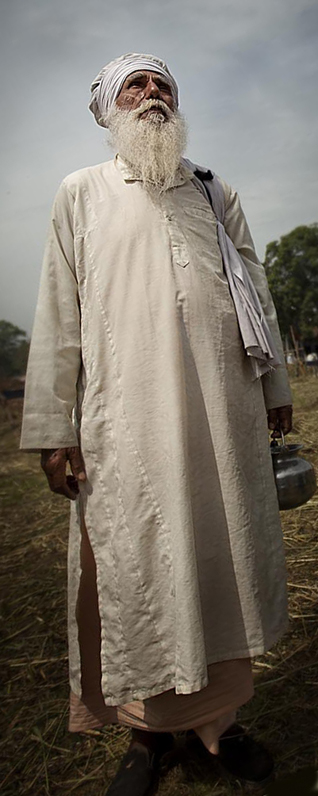History
A Page From History:
What Sikhs Can Do When They Set Their Mind To It
Text by HARI RAM GUPTA, Intro & Photos by AMARDEEP SINGH
Punjab, the land of five rivers, today stands divided across Pakistan and India. Fragmented by religious divisions, originally fuelled by the paltry politics of the British Raj and now by the current corrupt governments of the respective countries, it’s language and culture is caught in a downward spiral.
Our history, as recorded by independent and objective scholars, is one of the ways to keep reminding us of what we are by understanding our past and the options that lie in our future.
The following extract from Hari Ram Gupta’s monumental five-volume work titled “History of the Sikhs” gives a worthy assessment of the region.
The most important factor in the political life of a country is its own security and survival as a nation.
It is in this respect that the north-western frontier (this refers to the undivided Punjab, that now lies across Pakistan and India) assumes the most important position. No other land frontier anywhere else has contributed so much to shape the life of the people as this frontier has done in India.
The foreign invasions across this frontier have greatly affected not only its political life but also its social life, economic life, religious life, spiritual life, its art, literature, language, thought and culture.
The Hindus never took any interest in their north-western frontier right from the time of Mahabharata. It was the policy of no objection to the entry of foreigners.
In Hindu literature there is generally no reference to the north-west frontier. If there is any mention at all, it is in derogatory terms.
The people of the Panjab bore the brunt of all the foreign invasions from the north-west. They would not easily part with their wealth and women. They put up the most stubborn resistance and exhausted the military power and material resources of the enemy within the land of the five rivers.
As a result little enthusiasm was left in the invader to proceed farther. The Iranians could not advance beyond river Beas. It took Alexander the Great ten months in advancing from the Hindukush to the Indus, and nineteen months to subdue the Panjab.
He had taken as much time in reducing Asia Minor (Turkey), Syria, Iran, Sistan, Afghanistan and Bactria (Turkistan) as he took in subduing the Panjab. His soldiers were so much frustrated that they declined to cross the river Beas.
The Arabs remained confined to Sind and Multan.
Mahmud of Ghazni plundered a large part of northern India, yet he could not establish his empire beyond the Ravi.
Muhammad Ghori was assassinated in the Panjab.
The Slaves, Khaljis, Tughlaks and Lodhis ruled Northern India, but their religious zeal had been consumed in the Panjab.
Babar could seize Delhi after invading the Panjab five times. The Mughals could maintain themselves in power by recruiting soldiers, generals and administrators from their homeland in Central Asia. Their religious zealotry was spent in fighting in the Panjab. Mainly political stimulant remained.
The main current of religious fanaticism of Muslim invaders was reduced into ripples, having lost its vigour and vitality in the Panjab.
Panjab again witnessed a score of foreign invasions from 1739 to 1799 in sixty years. Nadir Shah invaded India in 1739. Ahmad Shah Durrani attacked her nine times from 1747 to 1770. His son and successor, Timur Shah, led five expeditions from 1774 to 1789. Timur’s son and successor, Shah Zaman, entered India four times from 1793 to 1799.
We see during all these invasions, mainly Panjab alone was the victim of foreign aggression.
The Muslim view of north-western frontier was of welcome to their brethren from across the passes. Their supremacy in India depended upon them. During the Muslim rule of about eight hundred years almost all the lucrative posts both in the civil and military administration were filled by foreign Muslims. The Muslims of Indian origin were generally treated as pariahs.
The Sikh view was to put a stop to the ingress of all foreigners into their homeland. The foreign Afghan hordes stood on the heights of Khaibar Pass.
The Mughals anxiously waited to extend their greetings to them from the ramparts of the Red Fort. But the twin were separated by the native land of the long-haired guardians [Sikhs] of the North-West Frontier.
The two halves looked in despair at Peshawar and Delhi to meet each other. Their eyes could meet only in the new moon of Id.
As a result the foreign hordes starved for money and the Mughals starved for want of fresh blood to regenerate themselves.
Gobind Singh’s Khalsa closed the gateways upon the external enemy and clubbed the internal one.
[History of the Sikhs, Vol IV, by Hari Ram Gupta (1902 - 92), pp 514-31]
Please CLICK here to see more images by Amardeep Singh.
Edited for sikhchic.com
February 19, 2014
Conversation about this article
1: Sunny Grewal (Abbotsford, British Columbia, Canada), February 19, 2014, 11:26 PM.
I have never really understood how the terms Sher-Punjabi, Babbar-Sher or any of these variants applied to non-Sikh Punjabis. In fact, I was quite surprised to find out that these are slogans which are a shared part of Punjabi culture. I had always assumed growing up they were Sikh slogans. The Sikhs can point out quite clearly their claim to the word 'lion', but can the others?
2: H. Singh (United States), February 20, 2014, 1:52 AM.
Sunny Singh ji, it was Porus, the Punjabi king who presented a daunting challenge to Alexander the Great. Another good non-Sikh example is Diwan Mohkam Chand, one of Ranjit Singh's generals, who was instrumental in conquering Kashmir from the Afghans. I'm sure you may have also heard of Dhulla Bhatti, a Panjabi Muslim, who stood up to the might of the Mughals. These are just a few examples. I believe bravery and courage come from within the individual, regardless of religious background.





